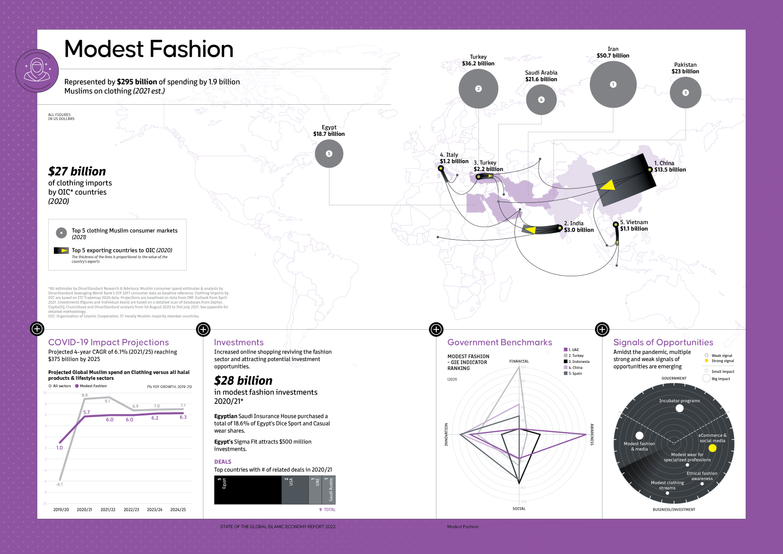- Reem El Shafaki

- Aug 29, 2022
- 2 min read
Updated: Jun 25, 2023
With the theme “Unlocking Opportunity”, the ninth edition of the State of the Global Islamic Economy Report, focuses on post COVID-19 recovery as the report continues to cover the sectors of Islamic finance, halal food and beverages, halal cosmetics, halal pharmaceuticals, Muslim-friendly travel, modest fashion, and Islamic-themed media and recreation. The report, which is produced by DinarStandard and is supported by the Department of Economy and Tourism (DET) in Dubai addresses developments as well as challenges and opportunities for those sectors.

Size of the Global Islamic Economy Market
This year’s SGIE report estimates that Muslims worldwide spent US$2 trillion in 2021 on food, pharmaceuticals, cosmetics, modest fashion, travel, and media. This spending reflects 8.9 percent year-on-year growth, and is forecasted to reach US$2.8 trillion by 2025 at a cumulative annual growth rate (CAGR) of 7.5 percent.
Islamic finance assets are estimated to have reached US$3.6 trillion in 2022, and are expected to reach US$ 4.9 trillion by 2025
Investments

Investments in Islamic economy-relevant companies increased by 118% in 2020/21 to US$25.7 billion from US$11.8 billion in 2019/20. About 66.4% of the total investments in Islamic economy-relevant companies were covered by Islamic finance transactions, followed by 23.6% in halal products (food, pharmaceuticals, cosmetics, fashion) and 10% in Islamic lifestyle (travel and media). The figures include corporate-led mergers and acquisitions, venture capital investments in tech start-ups, and private equity investments.
Trade

Import of halal-related products by the Organization of Islamic Cooperation (OIC) member countries fell sharply by 6.5% from US$299 billion the previous year to US$279 billion in 2020. This is largely due to supply chain disruptions and economic crises faced by the OIC countries and their exporters during the COVID-19 pandemic. However, imports of halal products to OIC markets is projected to grow from US$279 billion in 2020 to US$336 billion at 3.8% CAGR by 2025.
Country Ranking in the Global Islamic Economy Indicator

In the report’s Global Islamic Economy Indicator that covers 81 countries, Malaysia, Saudi Arabia, the UAE, Indonesia, and Turkey led the rankings. New entrants to the top 15 include the UK and Kazakhstan. Turkey and Singapore moved up 7 and 8 positions respectively to reach the 5th and 7th positions overall. Nigeria and Sri Lanka have moved out of the top 15
Leaders’ Confidence Roundtable
To gauge the sentiment of industry leaders on the Islamic economy, a select group of industry executives working in various Islamic/halal economy sectors were asked through an online survey to comment on top growth areas and challenges in their respective sectors as well as their companies’ planned investments in the halal market. Sentiments across each of the sectors and select quotes are included in the report.
Signals of Opportunity
Thirty-five key signals of opportunity were identified including: sovereign Sukuk, nearshore production, travel tech investments, convenient and nutritious meals.





















